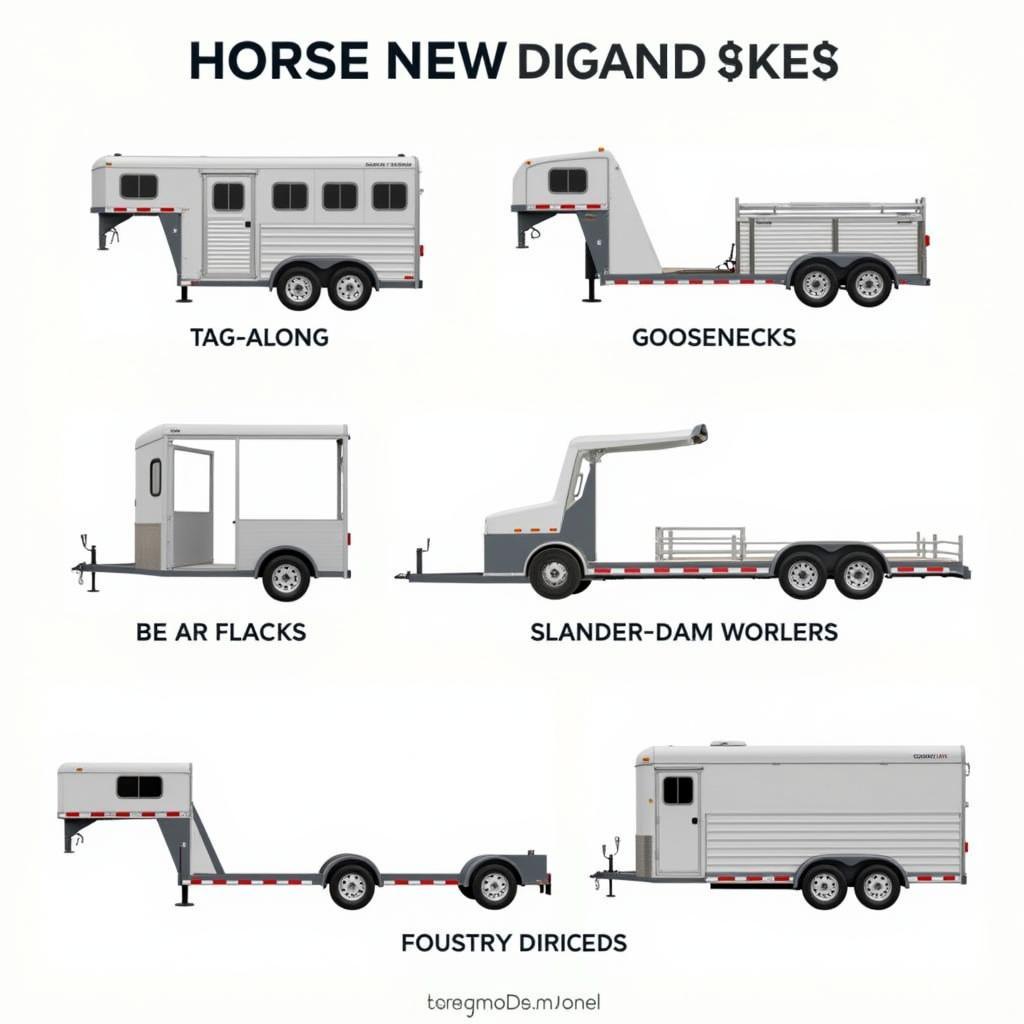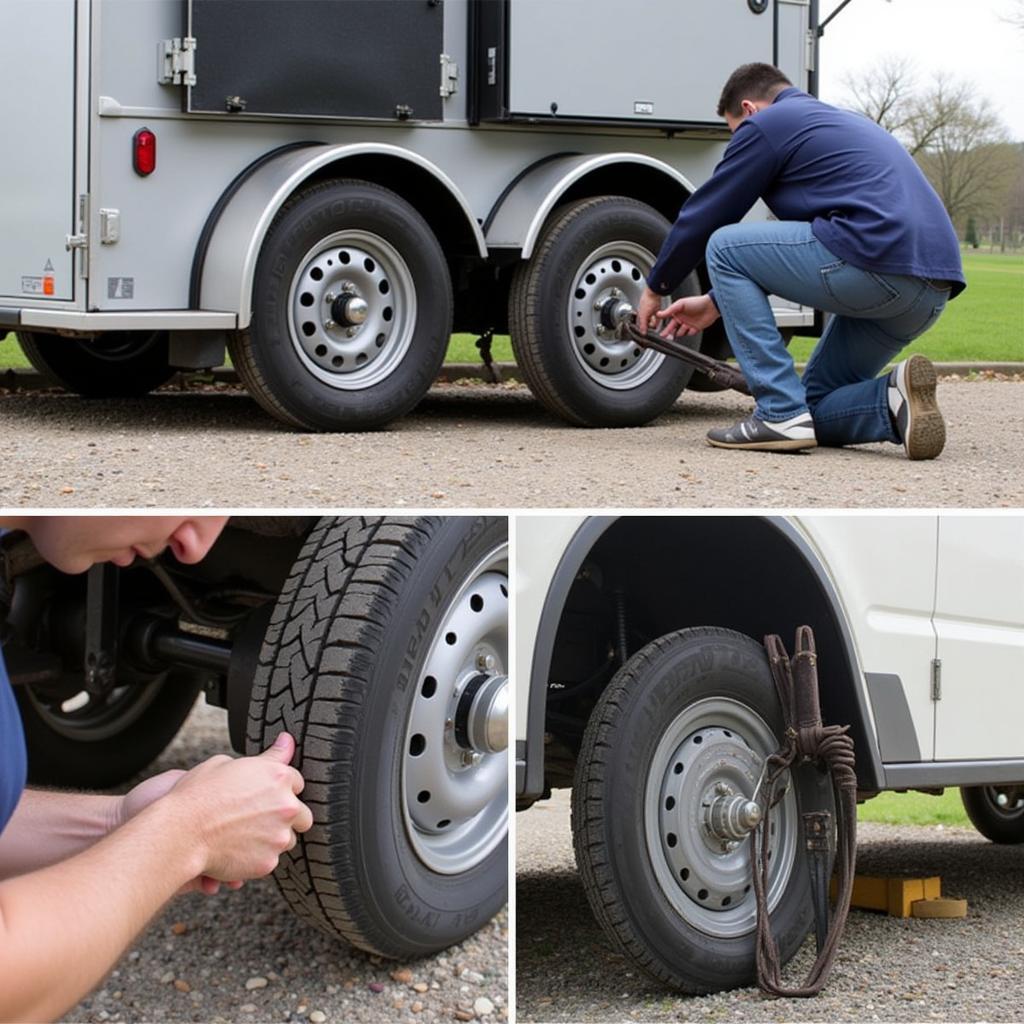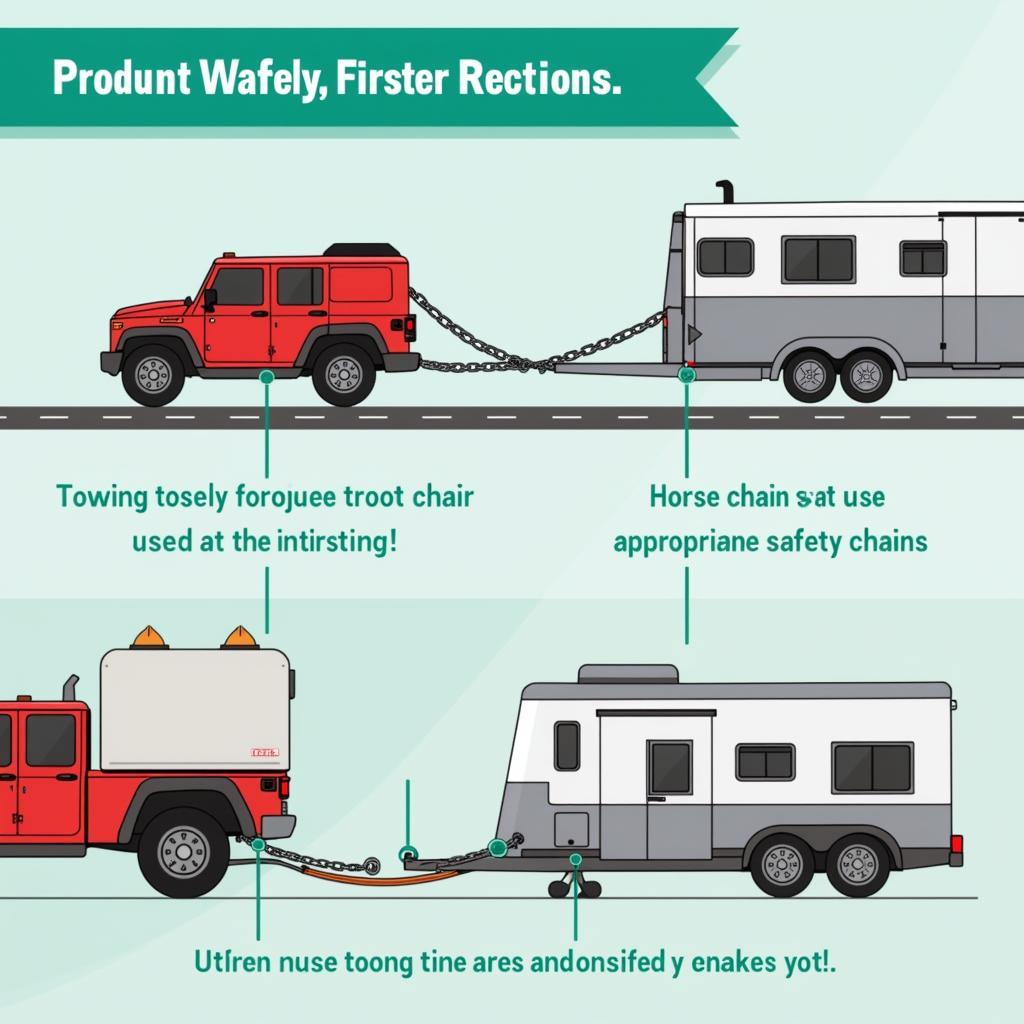Horse Floats are an essential investment for any horse owner. Whether you’re transporting your horse to competitions, trail rides, or veterinary appointments, a reliable and safe horse float is crucial. This guide will delve into the various aspects of choosing the right horse float, from understanding different types and sizes to considering essential safety features and maintenance tips.
 Different Types and Sizes of Horse Floats
Different Types and Sizes of Horse Floats
Understanding Horse Float Types and Sizes
The first step in choosing a horse float is understanding the different types available. Tag-along floats are a popular choice for their maneuverability and affordability, especially for owners with smaller towing vehicles. Gooseneck floats, on the other hand, offer greater stability and towing capacity, ideal for transporting multiple horses or larger breeds. Slant-load floats allow horses to travel at an angle, which can be more comfortable for them, especially during longer journeys. Choosing the right size is equally important and depends on the number and size of your horses. A float that’s too small can be cramped and stressful for your horse, while an oversized float can be unnecessarily expensive and difficult to tow. Measure your horse’s height and length to ensure a comfortable fit. sedivet horse is an important factor to consider when transporting horses, ensuring their well-being throughout the journey.
Essential Safety Features for Horse Floats
Safety is paramount when transporting horses. Look for horse floats with robust construction, sturdy flooring, and adequate ventilation. Check for features like padded dividers, breakaway brakes, and emergency exits. Proper lighting and reflective tape are also crucial for visibility, especially during night travel or in adverse weather conditions.
“Ensuring the safety and comfort of your horse during transport is non-negotiable,” says renowned equine veterinarian, Dr. Emily Carter. “Investing in a well-designed horse float with adequate safety features is a testament to responsible horse ownership.”
Maintaining Your Horse Float
Regular maintenance is essential to ensure the longevity and safety of your horse float. Inspect the tires, brakes, lights, and flooring regularly. Clean the float after each use to prevent the buildup of manure and dirt, which can harbor bacteria and attract pests. Check for rust and corrosion, and address any issues promptly.
 Essential Maintenance Tips for Your Horse Float
Essential Maintenance Tips for Your Horse Float
Choosing the Right Towing Vehicle
Your towing vehicle needs to be capable of safely handling the weight of the fully loaded horse float. Consult your vehicle’s owner’s manual for its towing capacity and ensure it’s sufficient for the combined weight of the float and your horses. Consider factors like engine power, transmission type, and braking system when selecting a towing vehicle. Remember, a comfortable millennium palma horse boat seat can make a difference, especially during long hauls.
What are the different types of horse floats?
Horse floats come in various types, including tag-alongs, goosenecks, and slant-loads, each designed for different towing needs and horse comfort.
How do I choose the right size horse float?
Measure your horse’s height and length to determine the appropriate size float. Consider the number of horses you need to transport as well.
What are some essential safety features to look for?
Look for sturdy construction, padded dividers, breakaway brakes, adequate ventilation, proper lighting, and reflective tape.
 Safe Towing Practices for Horse Floats
Safe Towing Practices for Horse Floats
What maintenance is required for a horse float?
Regularly inspect tires, brakes, lights, and flooring. Clean the float after each use and address any rust or corrosion promptly. Don’t forget about horse teeth float for your horse’s overall health. A cheap horse trough is also essential for providing fresh water to your horses during transportation.
“Regular maintenance of your horse float is just as important as regular veterinary checkups for your horse,” adds Dr. Carter. “A well-maintained float ensures a safe and comfortable journey for your equine companion.”
In conclusion, choosing the right horse float involves careful consideration of various factors, from size and type to safety features and maintenance requirements. By investing in a suitable float and adhering to proper maintenance practices, you can ensure the safe and comfortable transport of your valuable equine partner. Remember, the well-being of your horse should always be the top priority. Horse floats are a vital tool for horse owners, and choosing wisely is essential. Perhaps you’d also like to know about inflatable horses.
FAQ
- What is the average lifespan of a horse float?
- How often should I service my horse float’s brakes?
- Are there specific regulations for towing horse floats in my state?
- What type of hitch is best for towing a horse float?
- How can I make my horse more comfortable during transport?
- What are the best practices for loading and unloading a horse from a float?
- Where can I find qualified horse float repair services?
For further assistance, please contact us at Phone Number: 0772127271, Email: [email protected] Or visit our address: QGM2+WX2, Vị Trung, Vị Thuỷ, Hậu Giang, Việt Nam. We have a 24/7 customer service team.